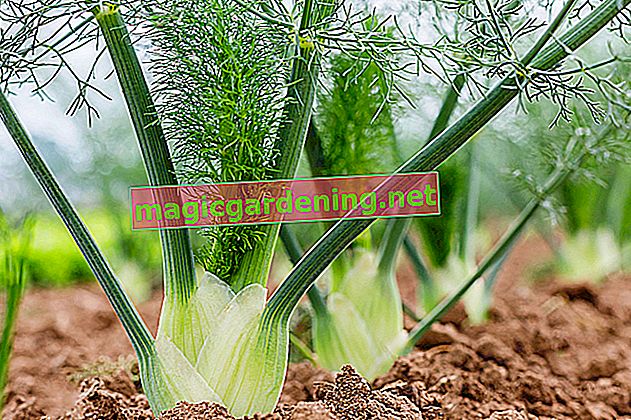
The choice of variety depending on the type of use
When it comes to fennel, there is a fundamental distinction between wild fennel, tuber fennel and spiced fennel. The latter is particularly suitable for harvesting the flavorful fennel seeds. However, the fennel also develops its umbel-like inflorescences under suitable conditions.
also read
- Harvesting fennel from your own garden
- Successfully growing red cabbage in your own garden
- Grow turmeric for your own needs in the garden or on the windowsill
Spiced fennel for teas, masks and ointments
The varieties of the spiced fennel tend to have a particularly pronounced flowering. As a result, they also enable a comparatively higher yield of fennel seeds compared to tuber fennel. If you want to grow fennel primarily for the use of the seeds in beauty masks, medicinal herb blends and stomach teas, you should sow spiced fennel specifically.
Tasty side dishes made from thick fennel bulbs
In the case of celeriac, cultivation is geared towards delayed and weak flowering. In this way, the plants in your garden can develop thick tubers in a suitable location. These in turn can be cut into pieces and cooked and served as an aromatic side dish.
Snap-resistant varieties in celeriac
Since the largest possible tuber is important for celeriac, the flowering of the plants should be prevented as much as possible. This can be done by a late sowing date in June, but the tubers then only ripen in the raised bed or in the viticulture climate in good time before winter. So-called bolt-resistant varieties can also be brought forward in March without then tending to flower early in summer.
The ideal location
Fennel plants grow particularly well in loose and deep soil. The soil should have sufficient nutrients and ideally be in the sun if possible. Since the fennel tends to shoot when it is too dry and stuck in heat, it is important to ensure adequate irrigation, especially with the tuber.
The fennel season is determined by the location
Overall, the average cultivation time for fennel is around 12 weeks. In particularly mild locations or in raised beds, late direct sowing outdoors is still possible in June; the information in the instructions for the seeds should be observed. Otherwise, fennel should be preferred at room temperature from March onwards and taken outdoors from May onwards in order to be ready for harvest in the summer season.
The preculture in the room
Since fennel is sensitive to the cold, it should be covered with a protective fleece when sowing direct outdoors at the beginning of May. For the pre-culture in the room, the ideal germination temperature should be between 20 and 22 ° Celsius. After germination, however, the temperature must also be reduced to a maximum of 16 ° Celsius, otherwise the root neck will be too long and unstable.
Tips & Tricks
Like all other umbelliferae, fennel should only be grown in the same location every three years. Lettuce, cauliflower, radishes and all legumes are suitable as precultures.








